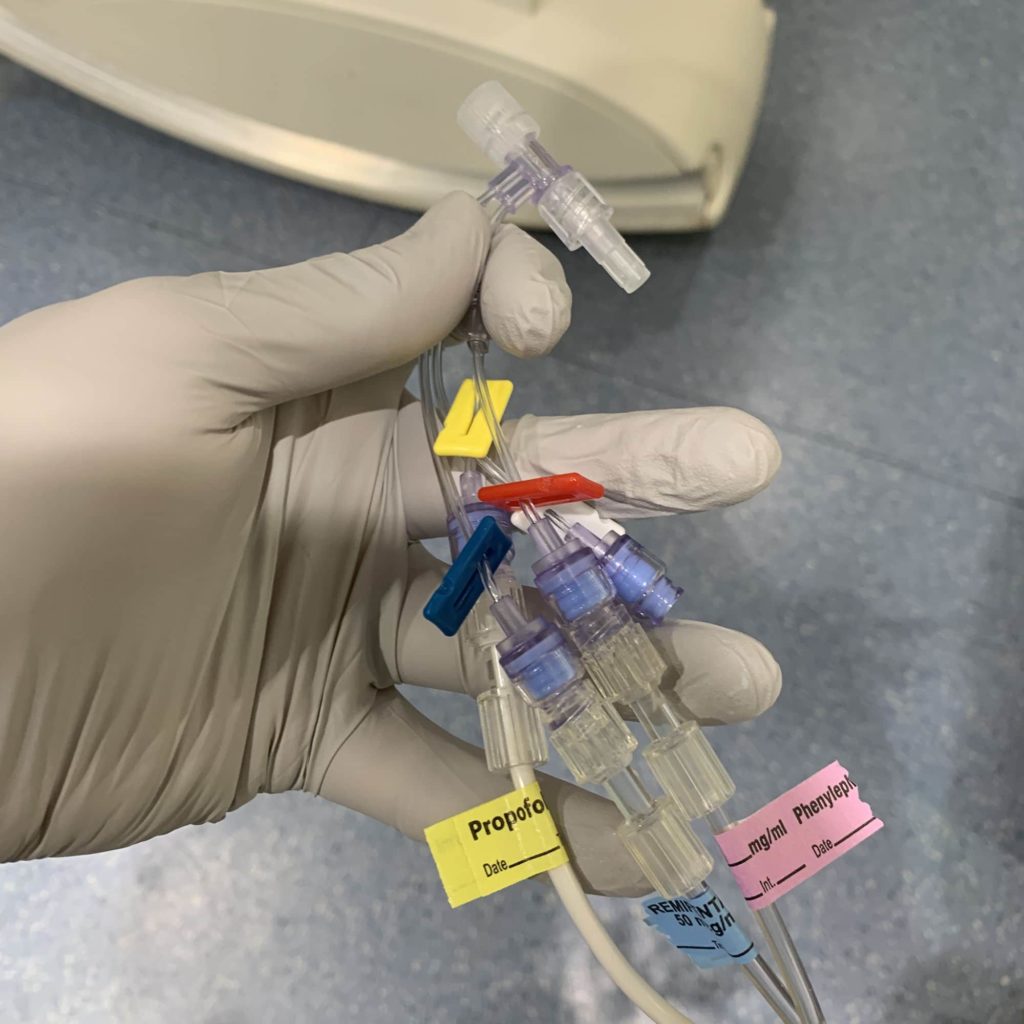The overwhelming majority of anesthetics I provide for transcatheter aortic valve replacements (TAVR) are monitored anesthesia care (MAC) – sedation with an anesthesiologist that can escalate the anesthetic. Typically, patients undergoing TAVR are older with many comorbidities making then unsuitable for surgical aortic valve replacements (SAVR). Consequently, it makes sense to be very mindful of sedation in these patients. I try utilizing a little “verbal anesthesia” to keep them oriented and reassured with pharmacologic sedation/analgesia in the background for comfort.
After administering 4 mg of ondansetron and placing a simple face mask with oxygen and end-tidal carbon dioxide (ETCO2) monitoring, I proceed to connect remifentanil (starting at 0.02 mcg/kg/min) , propofol (starting at 5 mcg/kg/min) , and phenylephrine infusions to a peripheral IV using an “octopus” splitter! These devices minimize the dead space in IV tubing allowing me to bolus other medications (ie, heparin) without inadvertently bolusing additional sedation from the aforementioned infusions. Once I’m happy with the set up and positioning, the infusions are escalated accordingly.
Our interventional cardiologists also obtain groin access and provide arterial and venous lines for monitoring and central access, respectively. These are incredibly important around the time of valve deployment!
Drop me a comment with questions! 🙂







Hi,
what’s the brand name of this particular “octopus” splitter???
All the best from Sweden!
BR, Ola
Hi Ola! I don’t remember the exact name (used them as a fellow), but here are some that look similar from BD: link to products